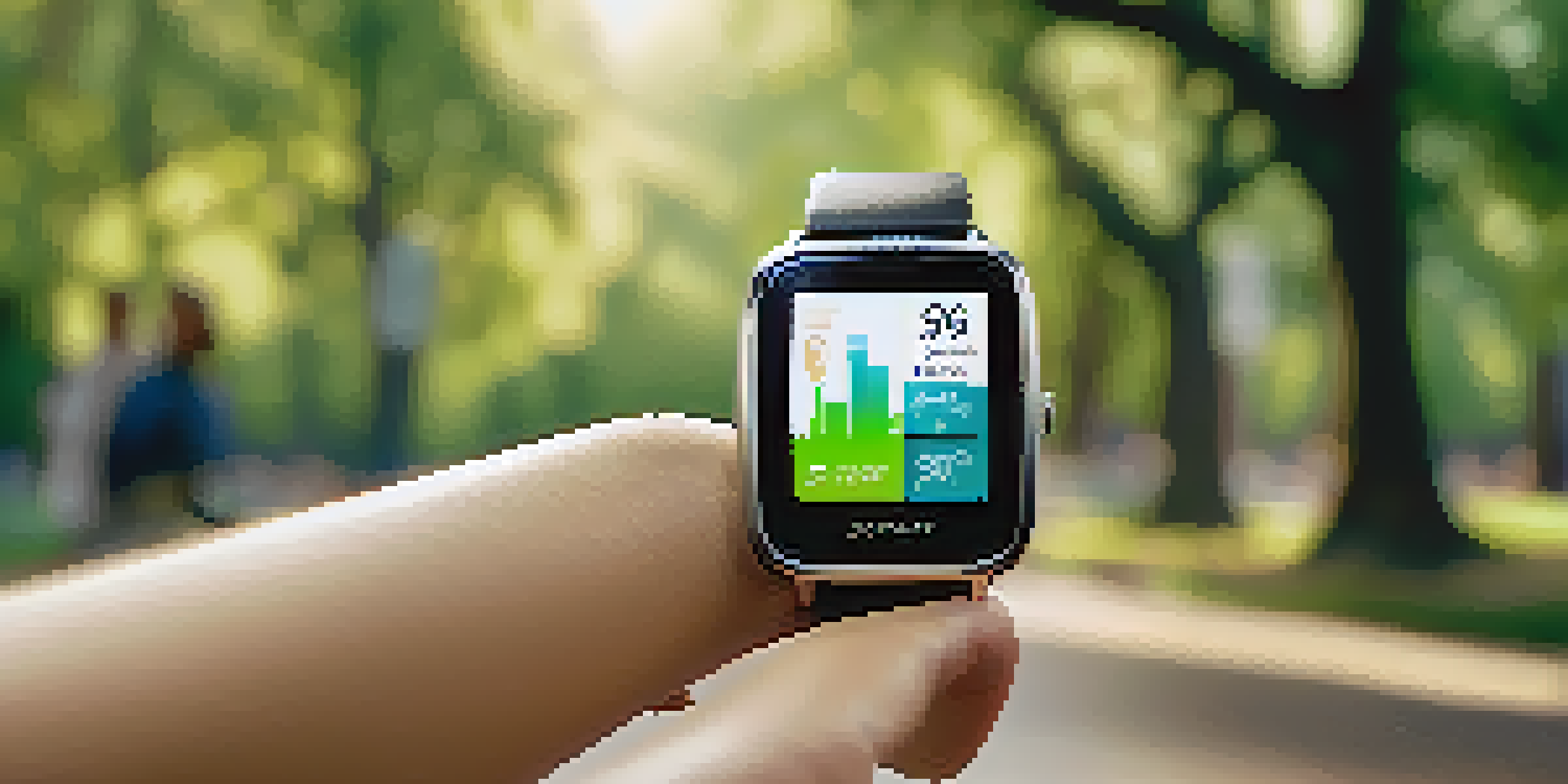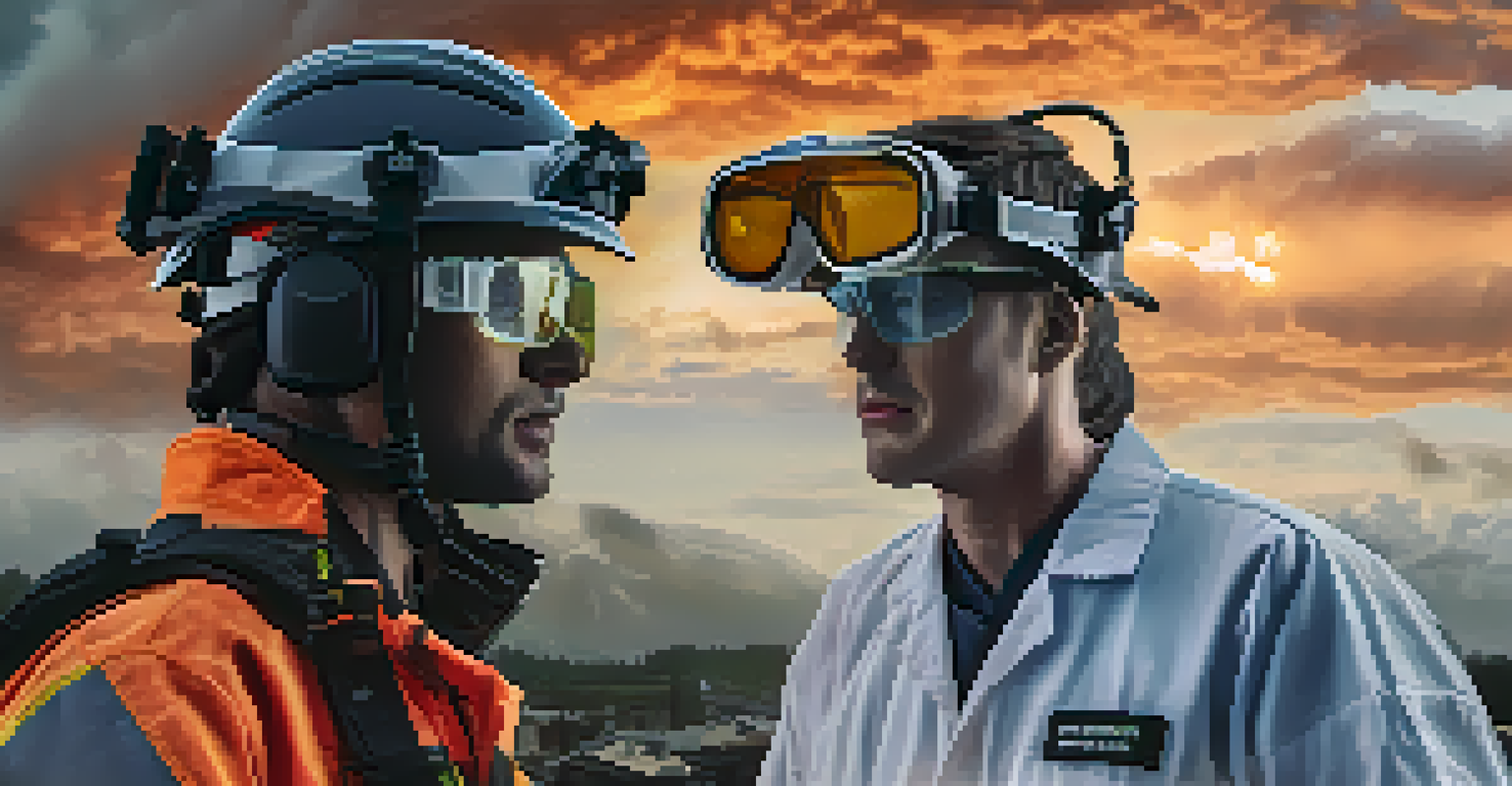Wearable Tech and Emergency Response: A Lifesaver?

The Rise of Wearable Technology in Everyday Life
Wearable technology has rapidly become a part of our daily routines, from smartwatches to fitness trackers. These devices are designed to be unobtrusive yet functional, providing users with real-time data about their health and environment. As technology advances, the integration of wearables into emergency response systems is becoming increasingly significant. Imagine a world where your smartwatch not only tracks your steps but can also alert authorities in a crisis situation.
Technology is best when it brings people together.
This shift towards wearable tech is not just about convenience; it's about enhancing safety and preparedness. For instance, emergency responders can receive vital health data from wearables, allowing them to make informed decisions on-site. The ability to have instant access to information can be the difference between life and death, especially in critical situations.
Moreover, wearables can facilitate faster communication during emergencies. With features like SOS alerts and location tracking, these devices empower users to seek help quickly. As we embrace this technology, it’s clear that wearables are not just gadgets; they are becoming essential tools in our safety toolkit.
How Wearable Tech Enhances Emergency Response
Wearable tech provides first responders with immediate access to data that can be crucial during emergencies. Devices equipped with sensors can monitor vital signs, detect falls, or even assess environmental hazards. For example, a heart rate monitor on a fitness tracker can alert paramedics to a user's condition before they even arrive at the scene.

Furthermore, wearables can streamline communication between victims and responders. When someone is in distress, a simple tap on their device can notify emergency services, sending vital information like location and health data in real-time. This capability ensures that help is dispatched more efficiently, potentially saving lives.
Wearables Enhance Emergency Safety
Wearable technology provides crucial real-time data and communication that can significantly improve safety and responsiveness during emergencies.
In addition, the integration of wearables into emergency response systems allows for better resource management. By analyzing data collected from various devices, rescue teams can prioritize their efforts based on real-time needs. This proactive approach can significantly improve the outcomes of emergency interventions.
Real-Life Applications of Wearable Tech in Emergencies
There are numerous real-life examples of wearable technology making a difference in emergency situations. For instance, during natural disasters, smartwatches equipped with GPS can help locate individuals who are trapped or lost. These devices can also relay important information about the user's health to rescuers, facilitating quicker medical attention.
The greatest danger in times of turbulence is not the turbulence; it is to act with yesterday's logic.
Another notable application is found in workplaces with high-risk environments, such as construction sites. Wearables can monitor workers' movements and vital signs, alerting supervisors if someone is in danger or requires immediate assistance. This proactive safety measure not only protects employees but also enhances overall workplace safety protocols.
Moreover, during the COVID-19 pandemic, wearables played a crucial role in monitoring health metrics and contact tracing. Devices that track symptoms could alert users to seek medical help or self-isolate, thus helping to prevent the spread of the virus. These instances illustrate how wearable tech is evolving into a vital resource in emergency response.
Challenges and Limitations of Wearable Tech
While wearable technology offers many benefits, it is not without its challenges. One significant concern is the reliability of the data collected. If a device malfunctions or provides inaccurate readings, it could lead to misguided emergency responses. Thus, ensuring the accuracy and dependability of these devices is paramount for their success in critical situations.
Privacy and security are also pressing issues. With increasing amounts of personal health data being transmitted, the risk of data breaches becomes a concern. Users must feel confident that their information is secure, particularly when it comes to sensitive health data being shared with emergency services.
Challenges in Wearable Tech Usage
Despite their benefits, wearables face challenges such as data reliability, privacy concerns, and a technological gap among users that need addressing.
Additionally, there can be a technological gap among users, particularly among older populations who may be less familiar with such devices. Educating users on how to effectively utilize these technologies is essential for maximizing their potential benefits during emergencies.
Future Innovations in Wearable Tech for Emergencies
The future of wearable technology in emergency response looks promising, with numerous innovations on the horizon. For instance, advancements in AI could lead to smarter devices that can predict emergencies before they happen. Imagine a smartwatch that not only tracks your health but can also analyze patterns to alert you if something seems off.
Additionally, the development of more sophisticated sensors could enhance the capabilities of wearables. Future devices may be able to detect environmental hazards, such as smoke or extreme temperatures, and alert users instantly. Such innovations could be lifesaving in situations where every second counts.
Moreover, the integration of augmented reality (AR) into wearables could provide responders with critical information in real-time. For example, AR glasses could overlay vital data about a patient’s condition directly in the responder's line of sight, aiding in quicker decision-making. As technology evolves, the potential for wearables to revolutionize emergency response is vast.
Case Studies: Success Stories of Wearable Tech
Several case studies highlight the success of wearable technology in emergency situations. One notable example is the use of wearables during the 2020 wildfires in Australia. Firefighters equipped with smart helmets that monitored their vital signs were able to receive alerts if they were becoming overheated or exhausted. This technology not only enhanced their safety but also improved team coordination during rescue operations.
Another case involves the use of wearable devices in hospitals to monitor patients in critical condition. These devices can send real-time alerts to medical staff if a patient's health deteriorates, allowing for swift intervention. Hospitals that have implemented these systems have reported improved patient outcomes and reduced response times.
Future Innovations Are Promising
Advancements in AI and sensor technology are set to revolutionize wearable devices, enhancing their ability to predict emergencies and provide critical information.
These success stories underscore the potential of wearable tech to save lives and improve emergency response. As more organizations recognize the value of integrating wearables into their protocols, we can expect to see even more impactful results.
Conclusion: Embracing Wearable Tech for Safer Futures
In conclusion, wearable technology is transforming the landscape of emergency response. By providing real-time data and enhancing communication, wearables empower both individuals and responders to act swiftly in crises. As we continue to embrace this technology, the potential for saving lives grows exponentially.
However, it is crucial to address the challenges and limitations that come with these advancements. Ensuring data accuracy, privacy, and user education will be vital in maximizing the effectiveness of wearables in emergency situations. Collaboration between tech developers, healthcare professionals, and users will be key to overcoming these hurdles.

Ultimately, the integration of wearable tech into emergency response systems represents a significant step toward creating a safer world. By harnessing the power of technology, we can equip ourselves and our communities to respond effectively to emergencies, making every second count.